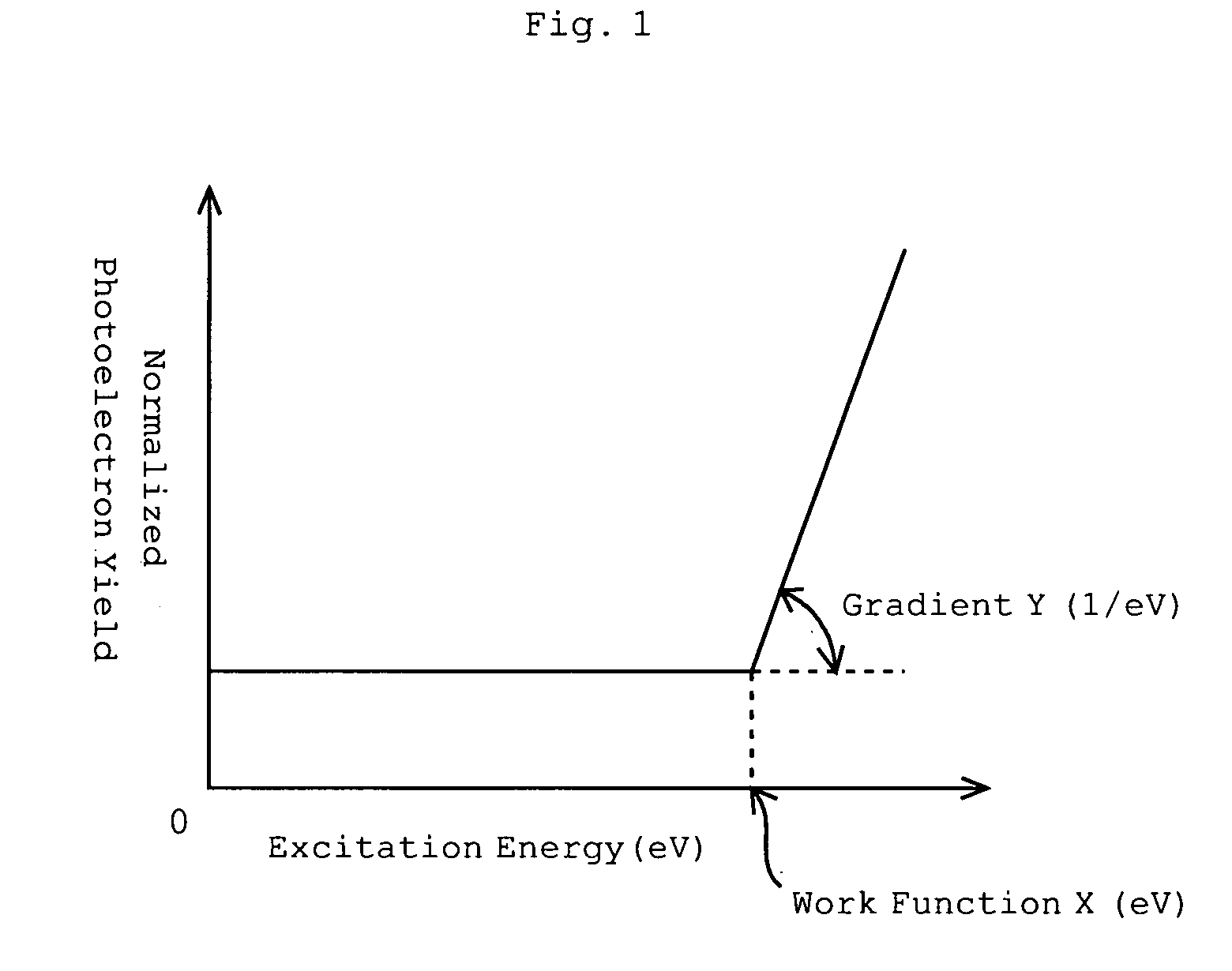Developer for Development of Electrostatic Image and Production Process Thereof
a technology of electrostatic image and development process, applied in the field of developers, can solve the problems of reducing the durability of printing, reducing the application range of developers, so as to achieve excellent environmental stability and printing durability, and easy cleaning
- Summary
- Abstract
- Description
- Claims
- Application Information
AI Technical Summary
Benefits of technology
Problems solved by technology
Method used
Image
Examples
preparation example 1
Synthesis of Charge Control Resin 1
[0116]Into 900 parts of toluene, was poured 100 parts of a polymerizable monomer composed of 85% of styrene, 13% of n-butyl acrylate and 2% of 2-acrylamido-2-methylpropane-sulfonic acid, and the temperature of the resultant mixture was raised to 80° C. in the presence of 4 parts of azobisdimethylvaleronitrile as a polymerization initiator to conduct a reaction for 8 hours. After completion of the reaction, toluene was distilled off under reduced pressure to obtain a sulfonic group-containing copolymer. The weight average molecular weight (Mw) of the sulfonic group-containing copolymer was 22,000. This sulfonic group-containing copolymer is referred to as “a charge control resin 1”. The content of a structural unit having a functional group in the charge control resin 1 is 2%.
preparation example 2
Preparation of Spherical Fine Silica Particles 1
[0117]A hundred parts of mixed powder composed of 1.0 mol, in terms of an SiO2 content, of silica powder (average particle diameter: 2 μm, maximum particle diameter: 60 μm) and 0.8 mol of metal silicon powder (average particle diameter: 10 μm, maximum particle diameter: 100 μm) was mixed with 50 parts of purified water, and the resultant mixture was placed in a thin-wall container to intermittently feed it to an electric oven of 2,000° C. After hydrogen gas was introduced from the same direction as in the feeding of the raw mixture to conduct a reaction, the hydrogen gas and generated gases were sucked by an exhaust blower provided at an upper part in an opposite direction in the oven, the mixture was brought into contact with air at a rate of 400 Nm3 / hr, and spherical fine silica particles formed were collected by a bag filter while cooling them. The spherical fine silica particles were classified by an air classifier. The resultant s...
example 1
[0119]A polymerizable monomer composition was obtained by wet-milling 80.5 parts of styrene, 19.5 parts of n-butyl acrylate, 0.6 part of divinylbenzene, 0.8 part of t-dodecylmercaptan and 6 parts of C.I. Pigment Blue 15:3 (product of Clariant Co.) as a cyan pigment by means of a media type wet mill (PICOMILL; manufactured by ASADA IRON WORKS CO., LTD.) and then adding, mixing and dissolving 5 parts of the negative charge control resin 1 obtained in Preparation Example 1 and 10 parts of dipentaerythritol hexamyristate (product of Nippon Oil & Fats Co., Ltd.).
[0120]On one hand, an aqueous solution with 6.6 parts of sodium hydroxide dissolved in 50 parts of ion-exchanged water was gradually added to an aqueous solution with 11.8 parts of magnesium chloride dissolved in 250 parts of ion-exchanged water with stirring to prepare an aqueous medium containing colloid of magnesium hydroxide.
[0121]On the other hand, 1 part of methyl methacrylate and 65 parts of ion-exchanged water were mixed ...
PUM
 Login to View More
Login to View More Abstract
Description
Claims
Application Information
 Login to View More
Login to View More - R&D
- Intellectual Property
- Life Sciences
- Materials
- Tech Scout
- Unparalleled Data Quality
- Higher Quality Content
- 60% Fewer Hallucinations
Browse by: Latest US Patents, China's latest patents, Technical Efficacy Thesaurus, Application Domain, Technology Topic, Popular Technical Reports.
© 2025 PatSnap. All rights reserved.Legal|Privacy policy|Modern Slavery Act Transparency Statement|Sitemap|About US| Contact US: help@patsnap.com

